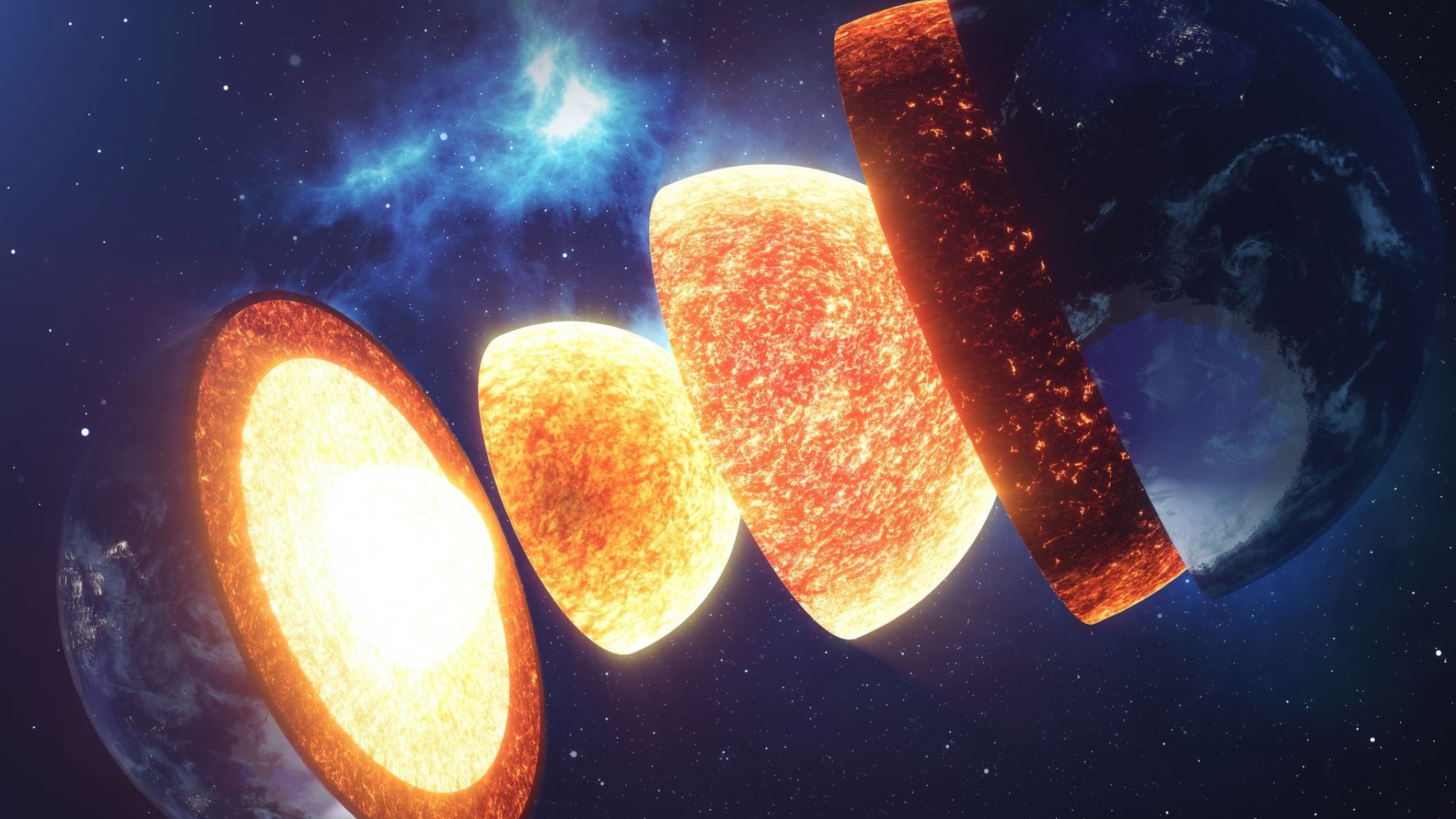Home>Science>The Ultimate Guide To Geography, Geology, And Earth Science: Unveiling The Key Differences


Science
The Ultimate Guide To Geography, Geology, And Earth Science: Unveiling The Key Differences
Published: January 11, 2024
Discover the key differences between geography, geology, and earth science in this comprehensive guide. Explore the fascinating world of science with expert insights and explanations.
(Many of the links in this article redirect to a specific reviewed product. Your purchase of these products through affiliate links helps to generate commission for Regretless.com, at no extra cost. Learn more)
Table of Contents
Introduction
The world we inhabit is a wondrous tapestry of diverse landscapes, natural phenomena, and geological formations. At the heart of understanding our planet lies the interdisciplinary realms of geography, geology, and earth science. These fields provide invaluable insights into the dynamic processes that shape the Earth and influence the distribution of resources, ecosystems, and human societies.
As we embark on this enlightening journey through the realms of geography, geology, and earth science, we will unravel the distinctive characteristics and fundamental principles that underpin each discipline. From the intricate patterns of landforms to the forces that sculpt the Earth's surface, we will delve into the captivating realm of geography, geology, and earth science to gain a deeper appreciation of the natural world.
Join us as we embark on an expedition to uncover the mysteries of our planet, exploring the captivating landscapes, geological wonders, and environmental phenomena that define the intricate tapestry of Earth's physical and natural processes. Through this comprehensive guide, we aim to illuminate the unique facets of geography, geology, and earth science, shedding light on their individual significance and the interconnectedness that binds them together in the grand narrative of Earth's evolution and dynamic nature.
Geography: Definition and Key Concepts
Geography, derived from the Greek words "ge" (Earth) and "graphein" (to write), is the study of the Earth's landscapes, environments, and the relationships between people and their surroundings. It encompasses a broad spectrum of disciplines, integrating physical, biological, and social sciences to analyze spatial patterns and the interplay between human activities and the natural environment. At its core, geography serves as a bridge between the natural and social sciences, offering a holistic perspective on the Earth's physical features, climates, populations, and cultural diversity.
Key Concepts:
-
Physical Geography: This branch of geography focuses on the Earth's natural processes and features, including landforms, ecosystems, climates, and environmental phenomena. It examines the dynamic interactions between the lithosphere, hydrosphere, atmosphere, and biosphere, elucidating the intricate mechanisms that shape the Earth's surface and influence natural phenomena such as erosion, weathering, and tectonic activity.
-
Human Geography: Human geography delves into the spatial aspects of human settlements, populations, cultures, and economic activities. It explores the patterns of urbanization, migration, cultural diffusion, and the impact of human activities on the environment. By analyzing the distribution of resources, urban landscapes, and demographic trends, human geography provides valuable insights into the complex relationship between society and the environment.
-
Geospatial Technologies: In the contemporary landscape of geography, the integration of geospatial technologies such as Geographic Information Systems (GIS), remote sensing, and global positioning systems (GPS) has revolutionized the way geographic data is collected, analyzed, and visualized. These advanced tools enable geographers to map and model spatial phenomena, monitor environmental changes, and make informed decisions in diverse fields, including urban planning, environmental management, and disaster response.
-
Cultural Landscape: The concept of cultural landscape emphasizes the tangible and intangible manifestations of human culture on the Earth's surface. It encompasses the imprint of human activities on the landscape, including architectural landmarks, agricultural terraces, and sacred sites, reflecting the dynamic interplay between human societies and their environments.
Geography, with its multifaceted approach, serves as a vital lens through which we comprehend the complex dynamics of our planet, fostering a deeper understanding of the interconnected processes that shape the Earth's physical and cultural diversity.
Geology: Definition and Key Concepts
Geology, derived from the Greek words "geo" (Earth) and "logos" (study), is the scientific study of the Earth's structure, composition, and dynamic processes that have shaped its evolution over millions of years. It delves into the intricate layers of the Earth, unraveling the mysteries of its geological formations, mineral resources, and the forces that have sculpted the planet's surface. At its core, geology provides profound insights into the Earth's history, offering a window into the ancient epochs and transformative events that have shaped the present-day landscapes.
Key Concepts:
-
Stratigraphy and Earth's History: Stratigraphy, a fundamental principle of geology, involves the study of rock layers or strata to decipher the Earth's history. By analyzing the sequence of sedimentary rocks, fossils, and geological structures, geologists can unravel the chronicles of ancient environments, climatic shifts, and the evolution of life forms over geological time scales.
-
Plate Tectonics and Earth Dynamics: The theory of plate tectonics forms the cornerstone of modern geology, elucidating the dynamic movements of the Earth's lithospheric plates. It explains the formation of continents, ocean basins, mountain ranges, and geological hazards such as earthquakes and volcanic eruptions. Through the study of tectonic processes, geologists gain insights into the forces that shape the Earth's surface and drive geological phenomena.
-
Mineralogy and Rock Formation: Geology encompasses the study of minerals and rocks, unveiling the diverse array of mineral compositions and the processes that lead to the formation of igneous, sedimentary, and metamorphic rocks. This branch of geology delves into the crystalline structures, physical properties, and geological significance of minerals, shedding light on their role in the Earth's geologic processes and resource exploration.
-
Geomorphology and Landforms: Geomorphology explores the dynamic processes that sculpt the Earth's landforms, including erosion, weathering, and the shaping of valleys, canyons, and coastal features. By examining the interplay between geological forces and surface features, geologists decipher the intricate evolution of landscapes and the impact of natural processes on the Earth's topography.
-
Applied Geology and Resource Exploration: Applied geology encompasses diverse fields such as economic geology, environmental geology, and exploration geophysics, playing a pivotal role in resource assessment, environmental management, and hazard mitigation. Geologists apply their expertise to identify mineral deposits, assess groundwater resources, and evaluate geological hazards, contributing to sustainable resource utilization and environmental stewardship.
Geology, with its profound insights into the Earth's dynamic processes and geological heritage, stands as a testament to the enduring legacy of our planet's evolution. It unveils the captivating narratives inscribed in the Earth's rocks and landscapes, inviting us to unravel the mysteries of geological time and the profound forces that have shaped our world.
Earth Science: Definition and Key Concepts
Earth science, also known as geoscience, encompasses a multidisciplinary approach to understanding the dynamic processes and interconnected systems that shape the Earth's geosphere, hydrosphere, atmosphere, and biosphere. It integrates principles from geology, meteorology, oceanography, and environmental science to unravel the complex interactions governing the planet's physical and environmental phenomena. At its essence, earth science serves as a holistic framework for exploring the intricate dynamics of our planet, from the geological forces that shape landscapes to the atmospheric processes that govern weather patterns and climate dynamics.
Key Concepts:
-
Environmental Systems: Earth science delves into the complex web of environmental systems, including the interactions between the lithosphere, hydrosphere, atmosphere, and biosphere. It examines the flow of energy, matter, and nutrients within ecosystems, elucidating the intricate feedback mechanisms that sustain life and influence environmental processes.
-
Climate Dynamics: The study of climate dynamics within earth science encompasses the analysis of atmospheric circulation, climate patterns, and the impact of natural and anthropogenic factors on global and regional climates. By integrating meteorological data, climate models, and paleoclimatic records, earth scientists unravel the complexities of climate variability and long-term trends, shedding light on the profound implications for ecosystems and human societies.
-
Natural Hazards and Disaster Management: Earth science plays a pivotal role in assessing and mitigating natural hazards, including earthquakes, volcanic eruptions, tsunamis, and severe weather events. Through the analysis of geological hazards, seismic activity, and atmospheric phenomena, earth scientists contribute to disaster preparedness, risk assessment, and the development of strategies to enhance community resilience in the face of natural disasters.
-
Oceanography and Marine Systems: The realm of earth science extends to the study of oceanography, encompassing the physical, chemical, and biological aspects of marine systems. It explores ocean currents, marine ecosystems, coastal processes, and the impact of human activities on marine environments, offering insights into sustainable ocean management and the conservation of marine biodiversity.
-
Geospatial Analysis and Earth Observation: Earth science leverages advanced geospatial technologies, satellite remote sensing, and geographic information systems to monitor environmental changes, analyze land use patterns, and assess natural resources. These tools enable earth scientists to visualize and interpret spatial data, facilitating informed decision-making in environmental management, urban planning, and natural resource conservation.
Earth science, with its integrative approach and far-reaching implications, stands as a cornerstone of our efforts to comprehend the Earth's complex systems and address the environmental challenges facing our planet. It embodies a commitment to unraveling the interconnected processes that govern the Earth's physical and environmental dynamics, fostering a deeper appreciation of the intricate tapestry of our planet's natural heritage.
Key Differences Between Geography, Geology, and Earth Science
Geography, geology, and earth science are distinct yet interconnected disciplines that offer unique perspectives on the Earth's physical and environmental processes. While they share common elements, each field encompasses specific areas of study and methodologies, contributing to a comprehensive understanding of our planet's complex dynamics.
Scope and Focus
Geography primarily focuses on the spatial relationships between the Earth's physical features, ecosystems, and human activities. It integrates physical and social sciences to analyze patterns of human settlement, cultural landscapes, and the distribution of natural resources. In contrast, geology delves into the Earth's structure, composition, and geological processes that have shaped its evolution over geological time scales. It encompasses the study of rocks, minerals, tectonic processes, and the Earth's history. Earth science, as a multidisciplinary field, integrates principles from geology, meteorology, oceanography, and environmental science to explore the interconnected systems governing the Earth's geosphere, hydrosphere, atmosphere, and biosphere.
Methodologies and Approaches
Geography employs spatial analysis, cartography, and geographic information systems to map and analyze the distribution of physical and cultural phenomena. It integrates qualitative and quantitative methods to understand human-environment interactions and spatial patterns. Geology utilizes field observations, laboratory analyses, and geological mapping to unravel the Earth's geological history, mineral resources, and the processes shaping the planet's surface. Earth science leverages remote sensing, climate modeling, and geospatial technologies to monitor environmental changes, assess natural hazards, and analyze the interconnected systems governing the Earth's physical and environmental dynamics.
Interdisciplinary Connections
Geography serves as a bridge between the natural and social sciences, integrating insights from physical geography, human geography, and geospatial technologies to comprehend the complex interactions between human societies and the natural environment. Geology, while rooted in the Earth sciences, intersects with disciplines such as chemistry, physics, and biology to unravel the Earth's geological processes, mineralogy, and geomorphology. Earth science embodies a multidisciplinary approach, integrating principles from geology, meteorology, oceanography, and environmental science to explore the interconnected systems that govern the Earth's complex dynamics.
Application and Implications
Geography finds applications in urban planning, environmental management, and resource conservation, providing insights into sustainable land use, spatial planning, and cultural landscapes. Geology contributes to mineral exploration, resource assessment, and geological hazard mitigation, offering valuable insights into the Earth's geological resources and the dynamics of natural hazards. Earth science plays a pivotal role in climate research, environmental monitoring, and disaster management, addressing the multifaceted challenges posed by climate change, natural hazards, and the sustainable management of Earth's interconnected systems.
In essence, while geography, geology, and earth science are distinct fields of study, they collectively contribute to our holistic understanding of the Earth's physical, environmental, and cultural complexities, underscoring the interconnectedness of the natural world and human societies.
Conclusion
In conclusion, the realms of geography, geology, and earth science stand as pillars of knowledge that illuminate the intricate tapestry of our planet's physical, environmental, and cultural dynamics. Through the lens of geography, we gain profound insights into the spatial relationships between human societies and the natural environment, unraveling the complex patterns of human settlement, cultural landscapes, and the distribution of resources. The interdisciplinary nature of geography integrates physical and social sciences, fostering a holistic understanding of the Earth's diverse landscapes and the interactions that shape our world.
Likewise, geology serves as a testament to the enduring legacy of Earth's evolution, delving into the ancient epochs and transformative events that have sculpted the planet's geological heritage. From the study of rock layers and fossils to the exploration of plate tectonics and mineral resources, geology unveils the captivating narratives inscribed in the Earth's rocks and landscapes, inviting us to unravel the mysteries of geological time and the profound forces that have shaped our world.
Earth science, as a multidisciplinary framework, embodies a commitment to unraveling the interconnected processes that govern the Earth's complex systems. It integrates principles from geology, meteorology, oceanography, and environmental science to address the multifaceted challenges posed by climate change, natural hazards, and the sustainable management of Earth's interconnected systems. Through the study of environmental systems, climate dynamics, and geospatial analysis, earth science fosters a deeper appreciation of the intricate tapestry of our planet's natural heritage, offering invaluable insights into the dynamic processes that shape the Earth's geosphere, hydrosphere, atmosphere, and biosphere.
In essence, as we navigate the realms of geography, geology, and earth science, we embark on an enlightening journey that unveils the profound interconnectedness of our planet's physical, environmental, and cultural dimensions. These disciplines not only enrich our understanding of the Earth's complex dynamics but also inspire a sense of wonder and stewardship for the natural world. As we continue to explore the frontiers of knowledge, the realms of geography, geology, and earth science will undoubtedly remain indispensable guides, illuminating the path toward a deeper comprehension of our planet's intricate tapestry and the interconnected processes that shape our world.













